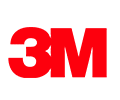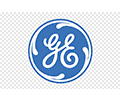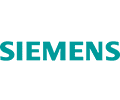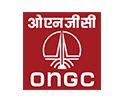South Korea Heat Exchanger Market Statistics & Future Outlook (2026–2034)
- The South Korea Heat Exchanger Market is expected to grow at a CAGR of around 6.76% during 2026-2034.
- In 2025, the market was valued at nearly USD 315 million.
- By 2034, it is projected to reach around USD 567.53 million.
- Urbanization and industrial expansion boost demand for advanced HVAC and process engineering solutions.
- Competition from alternative heat transfer technologies pressures manufacturers to innovate or lose market share.
- Renewable energy integration into geothermal and solar thermal plants offers new application areas for heat exchangers.
- Energy efficiency regulations push upgrades and investments in technologies that reduce consumption and emissions.
Insightful Analysis
The South Korea Heat Exchanger Market report insights & analysis offer in-depth understanding of market trends, growth drivers, challenges, and opportunities. This comprehensive analysis includes market size, segmentation, competitive landscape, and customer behavior to guide strategic decisions. Further, it aids in providing thorough market research, industry breakdown, market forecast, competitive examination, market trends, growth factors, SWOT analysis, and market opportunities. These insights support business planning, investment decisions, and market positioning for sustainable success.
Why Choose This Report?
- Provides a comprehensive overview of the overall market analysis, encompassing key trends, consumer behavior analysis, and risk assessment to support strategic decision-making.
- Provides accurate, up-to-date insights into market size, segmentation, and emerging opportunities, helping to minimize risk & capitalizing on growth.
- Gives deep understanding of target audience preferences, investment habits, and communication channels for enhanced product development & marketing effectiveness.
- Delivers competitive analysis & benchmarking, uncovering the strengths & weaknesses of market competitors to guide strategies.
- Consolidate comprehensive market intelligence, reducing reasoning & streamlining research efforts.
- Facilitates customized market segmentation & risk mitigation strategies, fine-tuned to the business objectives.
- Aids in identifying both market challenges & untapped opportunities within the industry to drive long-term business growth.
- Provides valuable information based on actual customer data & search trends.
South Korea Heat Exchanger Market Dynamics (2026–2034)
Market Driver:
Urbanization Boom: Core Market Driver - Rapid urbanization and industrial expansion are uniquely propelling South Korea’s heat exchanger market. The construction of commercial, residential, and infrastructural projects demands advanced HVAC and process engineering solutions, with heat exchangers playing a central role in ensuring energy-efficient thermal management for large installations across sectors.
Major Challenge:
Competition from Alternatives: Market Challenge - A nuanced challenge in South Korea is the rising competition from alternative heat transfer technologies. As end-users experiment with direct exchange or innovative cooling systems, heat exchanger manufacturers are pressured to innovate or risk losing market share. This trend is particularly explicit as industries seek streamlined, lower-cost thermal solutions.
Opportunity Ahead:
Renewable Energy Integration: Future Opportunity - Looking forward, the integration of heat exchangers into renewable energy infrastructures—such as geothermal, solar thermal plants—offers a promising transformation. Increasing adoption of sustainable energy sources and government support from 2026 to 2034 will generate new application areas for heat exchangers, boosting market expansion through efficiency-enhancing solutions tailored to clean energy.
Industry Trend:
Energy Efficiency Mandates: Shaping Trend - A dominant market trend is the strict enforcement of energy efficiency regulations in South Korea. The government’s push for greener operations in industrial and commercial sectors drives heat exchanger upgrades, with companies heavily investing in technologies that reduce consumption and emissions, solidifying energy efficiency as an enduring industry hallmark.
How is the South Korea Heat Exchanger Market Defined as per Segments?
The South Korea Heat Exchanger Market segmentation categorizes the market into distinct segments based on behavioral, psychographic, geographic, and demographic factors. Firmographic & technographic segmentation for B2B or B2C markets is also included. Further, by concentrating on client, lifestyle, location, behavior, and company attributes, these segments assist businesses in targeting particular customer or user needs, enhancing product/services positioning, and improving marketing methods. Effective market reach and resource allocation are achieved through this segmentation.
What is the Impact of Artificial Intelligence (AI) on the South Korea Heat Exchanger Market?
Artificial Intelligence (AI) significantly transforms the South Korea Heat Exchanger Market by enhancing efficiency, enabling faster data analysis, and driving innovation. AI tools automate repetitive processes, provide deeper insights using predictive analytics, and improve customer experiences through personalization. The technology unlocks new opportunities but requires strategic adaptation to fully realize its benefits and manage risks. Organizations integrating AI responsibly & strategically are expected to strengthen market outlook.
Company Profile: Largest South Korea Heat Exchanger Market Companies (2034)
By 2034, the South Korea Heat Exchanger Market would be led by Alfa Laval AB, Hanwha Corporation, Korea Heat Exchanger Ind Co., Ltd., Kelvion Holding GmbH, Xylem Inc., API Heat Transfer, Other Key Players (Suntech, Aidear, IL SUNG Engineering, local manufacturers), etc., who are forecasted to generate the highest market revenues & share owing to numerous activities like partnerships, collaborations & mergers, and innovation & launch of new products/services.
Major Queries Answered in the Report
- What is the current state of the South Korea Heat Exchanger Market?
- What key developments are influencing the South Korea Heat Exchanger industry?
- Which factors are shaping growth in the South Korea Heat Exchanger Market?
- What are the challenges faced by businesses in this sector?
- How are emerging technologies transforming the South Korea Heat Exchanger industry?
- Who are the primary competitive players in the South Korea Heat Exchanger domain?
- What new opportunities exist for stakeholders and investors?
- How are consumer and enterprise behaviors evolving within the market?
- Which regional and global factors impact South Korea Heat Exchanger adoption?
- Where can stakeholders access detailed, sector-specific insights on the South Korea Heat Exchanger Market?
- What innovations are defining the industry’s next phase of growth?
Table of Contents
- Introduction
- Objective of the Study
- Product/Technology Definition
- Market Segmentation
- Study Variables
- Research Methodology
- Secondary Data Points
- Breakdown of Secondary Sources
- Primary Data Points
- Breakdown of Primary Interviews
- Secondary Data Points
- Executive Summary
- Market Dynamics
- Drivers
- Challenges
- Opportunity Assessment
- Recent Trends and Developments
- Policy and Regulatory Landscape
- South Korea Heat Exchanger Market Overview (2020–2034)
- Market Size, By Value (KRW/USD Million)
- Market Share, By Type
- Shell & Tube Heat Exchangers (Fixed Tube, U-Tube, Floating Head)
- Plate & Frame Heat Exchangers (Gasketed, Welded, Brazed Plate)
- Air-Cooled Heat Exchangers
- Others
- Market Share, By Material
- Steel
- Nickel & Nickel Alloys
- Titanium
- Others
- Market Share, By End User
- Oil & Gas
- Chemical & Petrochemical
- Power Generation
- HVAC & Refrigeration
- Food & Beverage
- Pulp & Paper
- Other Industries
- Market Share, By Region
- Seoul Capital Area
- Yeongnam (Southeastern Region)
- Honam (Southwestern Region)
- Other Regions
- Market Share, By Company
- Revenue Shares
- Competition Characteristics
- Segment-wise & Industry-wise Market Overview & Forecast (2026–2034)
- By Type
- By Material
- By End User
- By Region
- Competitive Outlook & Company Profiles
- Alfa Laval AB
- Company Overview
- Business Segments
- Strategic Alliances/Partnerships
- Recent Developments
- Hanwha Corporation
- Company Overview
- Business Segments
- Strategic Alliances/Partnerships
- Recent Developments
- Korea Heat Exchanger Ind Co., Ltd.
- Company Overview
- Business Segments
- Strategic Alliances/Partnerships
- Recent Developments
- Kelvion Holding GmbH
- Company Overview
- Business Segments
- Strategic Alliances/Partnerships
- Recent Developments
- Xylem Inc.
- Company Overview
- Business Segments
- Strategic Alliances/Partnerships
- Recent Developments
- API Heat Transfer
- Company Overview
- Business Segments
- Strategic Alliances/Partnerships
- Recent Developments
- Other Key Players (Suntech, Aidear, IL SUNG Engineering, local manufacturers)
- Company Overview
- Business Segments
- Strategic Alliances/Partnerships
- Recent Developments
- Alfa Laval AB
- Contact Us / Disclaimer
Frequently Asked Questions








